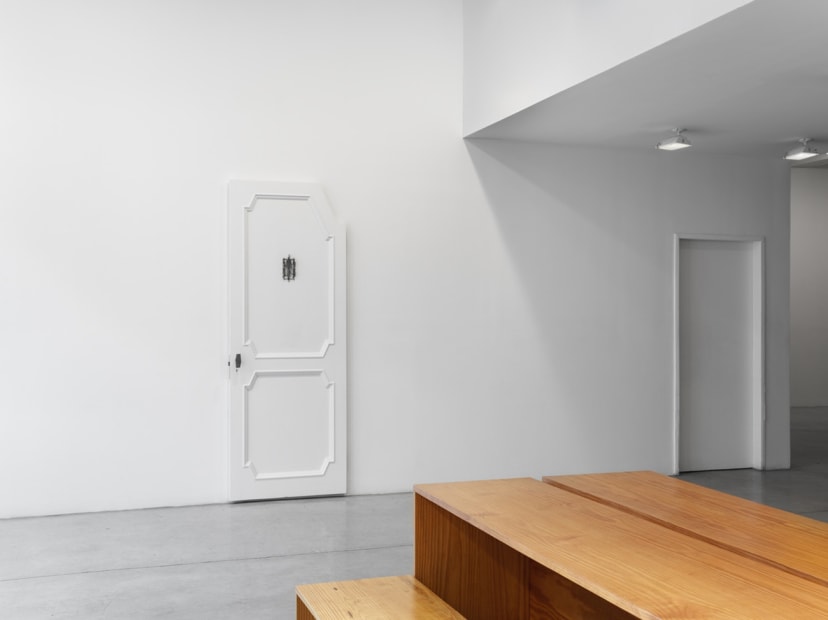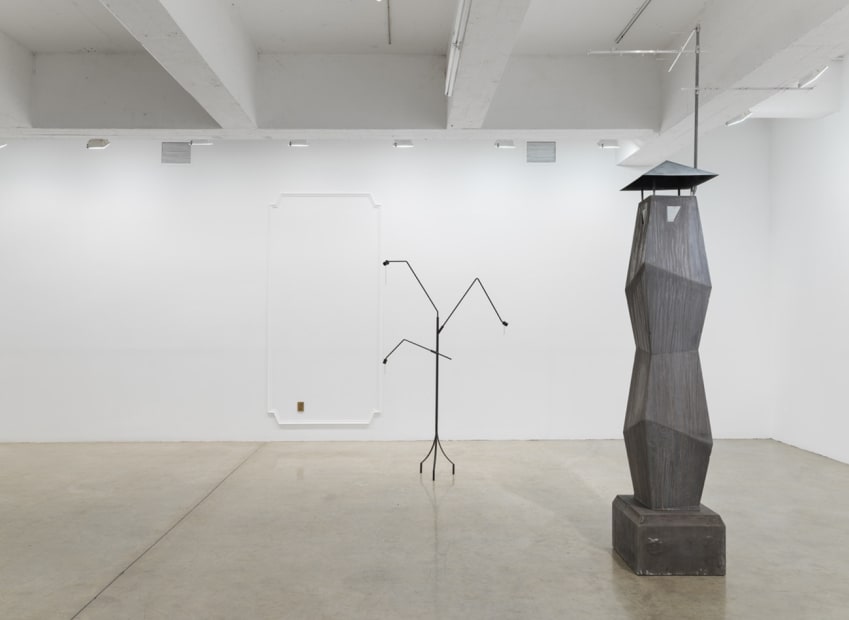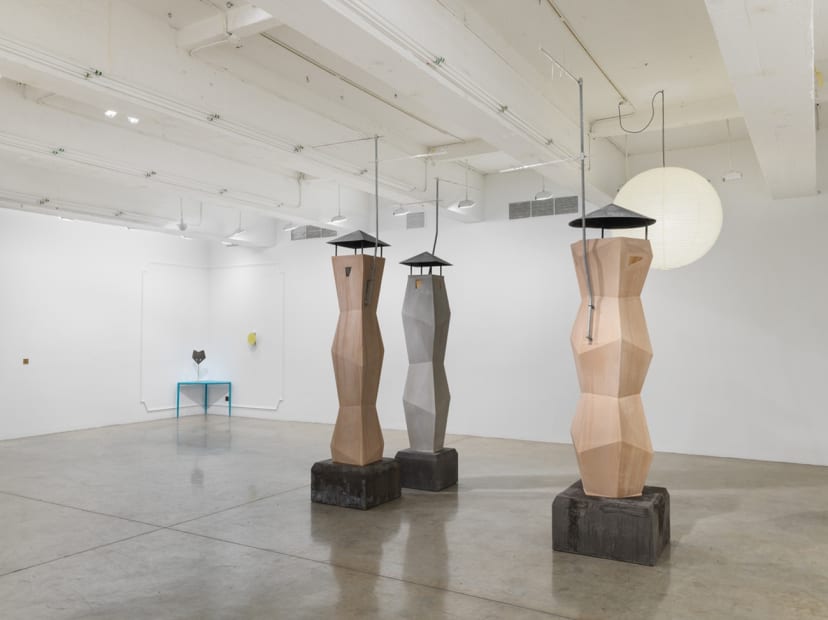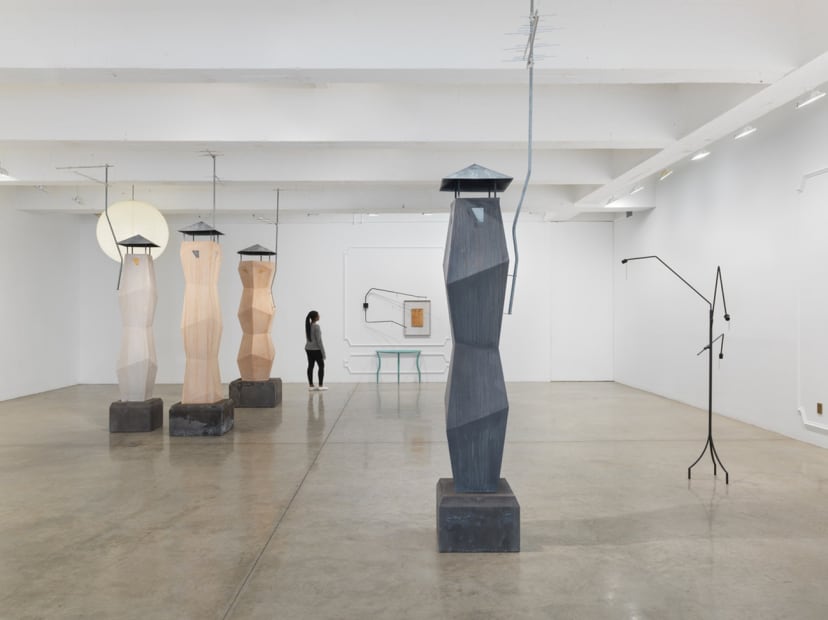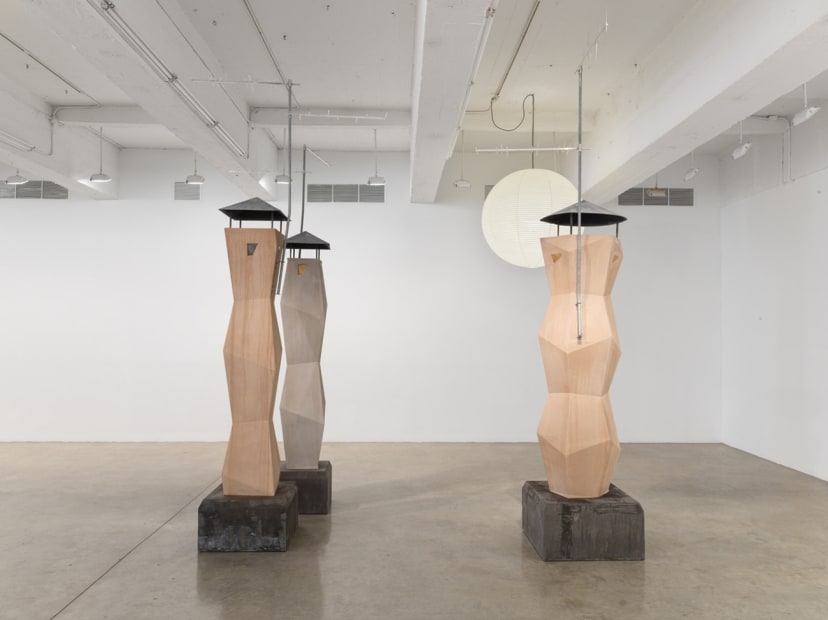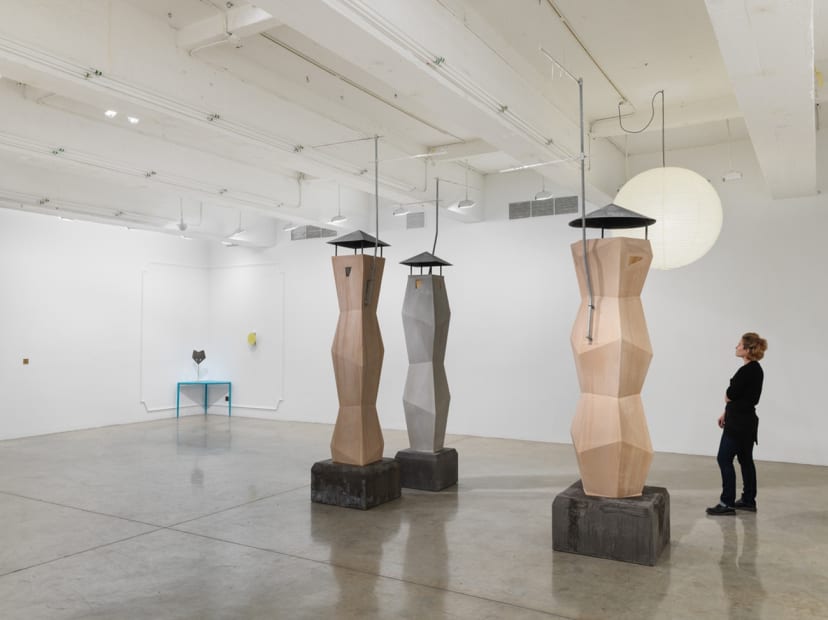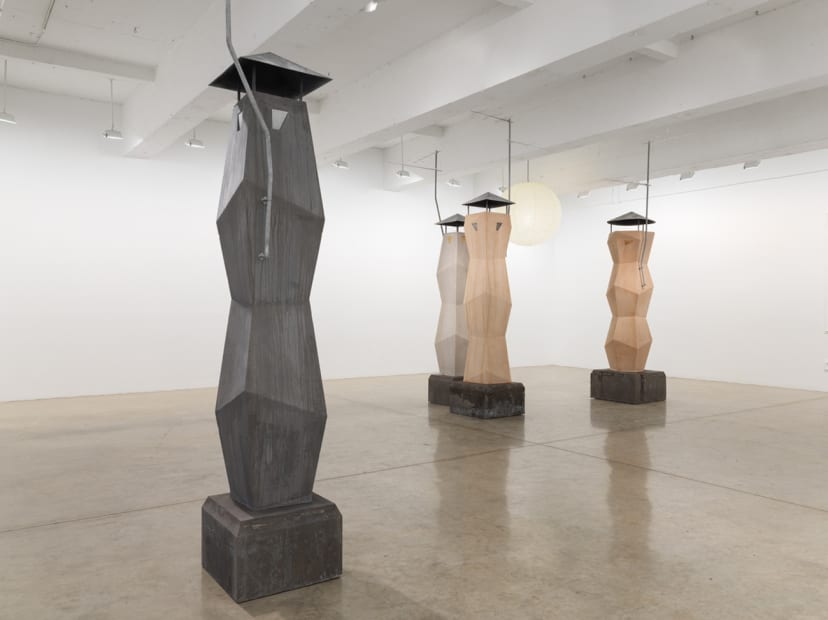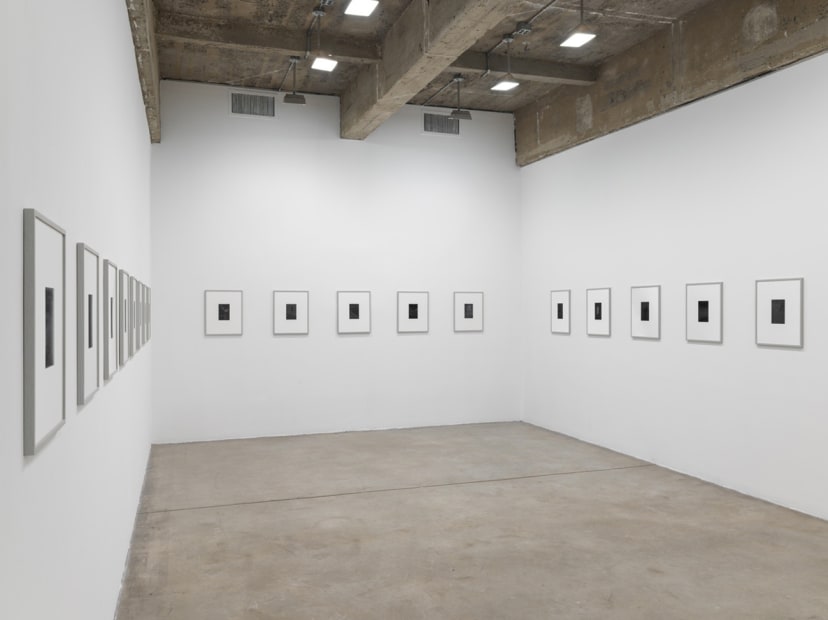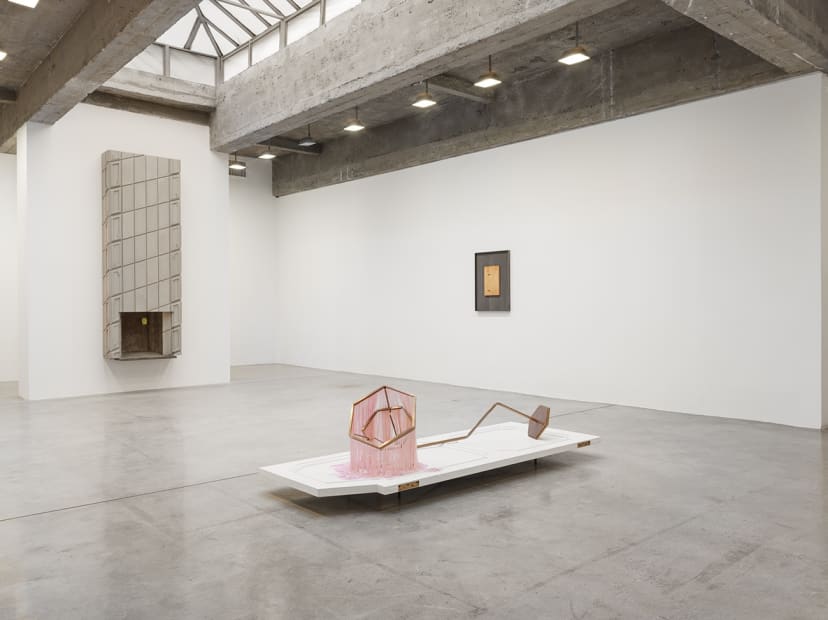For the past seventy years, de Chirico’s city has been one of the capitals of the modern imagination. It is a fantasy town, a state of mind, signifying alienation, dreaming and loss. Its elements are so well known by now that they fall into place as soon as they are named, like jigsaw pieces worn by being assembled over and over again; the arcades, the tower, the piazza, the shadows, the statue, the train, the mannequin. That de Chirico was a poet, and a great one, is never in dispute. He could condense voluminous feeling through metaphor and association.
— Robert Hughes, Nothing If Not Critical: Selected Essays on Art and Artist, 1990
Tanya Bonakdar Gallery is pleased to present Sleeping Chimneys. Dead Stars., a solo exhibition of new works by Martin Boyce on view Wednesday, May 3 through June 10, 2017. In his fourth solo exhibition at the gallery, Boyce presents new photographs, installations and sculptural works that investigate the physical and psychological landscapes that occupy our collective consciousness. Culling together an array of references from masks to cityscapes, from mass-produced design objects to a forest of denuded trees, Boyce’s work explores memory and timelessness. Images and objects move seamlessly between past, present and future, playing roles in precisely staged, atmospheric narratives. Boundaries collapse between the natural and the manmade, as Boyce contemplates the ambient poetry of the everyday.
For nearly two decades, Boyce has incorporated a palette of shapes and forms that frequently recall familiar structures from the built environment. In Sleeping Chimneys. Dead Stars., the artist’s acute gaze gradually transitions from the urban landscape to the domestic realm, conjuring an imagined dream-like environment. Like de Chirico’s worn puzzle pieces, Boyce brings together a lexicon of familiar forms—a door, a lamp, a light switch, a fireplace, a chimney—amplifying them within the gallery space.
Upon entering the gallery, a sculpture entitled There was a Door, welcomes visitors. The peephole is partially covered by a defensive bronze grill, suggesting the tension that lies between the external world and an interior that is left unseen. The angled pattern recalls the concrete trees designed by French sculptors Joël and Jan Martel, which have long been a source of inspiration in Boyce’s practice. For Boyce, these Cubist trees “represent a perfect collapse of architecture and nature.” Serving as the gateway into the exhibition, There was a
Door exemplifies Boyce’s ongoing exploration of portals and transitions.
In the gallery’s main space, four towering geometric ‘Sleeping Chimney’ sculptures stand sentry in a dimmed room, creating the illusion of a nocturnal rooftop landscape. Each Chimney is furnished with shuttered vent holes and capped with a TV aerial stretching to the ceiling. The closed vent holes, like resting eyelids, coat the scene with a sense of suspended time, while the antennas, in their solitude, seem to transmit the lost dreams of the imagined households below out into the crisp evening sky.
Disrupting the illusion of the rooftop terrain, several still-life vignettes emerge, blending interior and exterior worlds and further detaching the setting from any identifiable period or place. Made of reconfigured domestic icons, each scene is framed by its own decorative molding. In the corner, Still Life Landscape with Sun is anchored by a triangular blue steel table. On top, a geometric bird-like mask sits on an armature recalling the ghost of modernism—so present and haunting in Boyce’s oeuvre. A circular yellow lamp hangs above the table, like a darkened sun emitting no light on the scene—‘A Dead Star.’ Opposite the lamp, a cast bronze light switch pays homage to the missing light bulb.
Boyce’s fusion of the organic and the industrial is demonstrated in another scene entitled, A Hallway. A Lamp. Evening. (A Constellation of Dead Stars). A black steel three-armed lamp, sprouts from the gallery floor like a lonely sapling, at once silent and salient. Its form bears the memory of Modernist sensibilities recalling a distant cousin, and echoing Giacometti’s tree for Samuel Beckett’s 1961 production of Waiting for Godot. The empty sockets are cast in bronze, confounding any possibility of illumination and thus creating a constellation of ‘Dead Stars.’ In contrast, a large radiant Noguchi paper lantern suspends from the ceiling like a moon shining a glow throughout the space and silhouetting its eerie surroundings.
Boyce’s purgatory-like environments evoke the feeling of witnessing the aftermath of human presence. His scenes provide a sense of uncanny abandonment while simultaneously seeming familiar. The residues of an imagined utopia and its relics now deteriorated and detached from their previous existence.
At the top of the staircase, another familiar domestic form reveals itself—a tarnished blue bedframe flipped on its end. The absence of a mattress creates a skeletal passageway, leading us into a dreamscape. An illuminated hanging lamp guides our way Into This sleep—the title of this steel sculpture.
Past the hollowed frame, a painted door floats horizontally low to the ground. Now rendered as a bed, the door becomes a place for repose and reverie. A brass lamp rests on top. The lamp’s rigid post now wilts softly like a reclining figure, it’s pink fringes hang from the shade and drape like hair cascading gently on white sheets. Further exploring the contradictions that inform our perception, Dead Star (Reclining) dissolves the distinction between the constructed and the natural worlds. The familiar, often overlooked, forms have been given new life as they are expropriated from their original functions, altered, and mutated. The door becomes a bed, the bed becomes a door.
In the project space, Boyce presents twenty-five new landscape photographs stemming from his ongoing series entitled, A Partial Eclipse. Capturing subtle, peripheral scenes, these images are untied to any specific time or place. Created by a process of darkening and desaturation, this series of somber crepuscular moments appear as if the light has been stolen from them, silently waiting for a glimmer to resurface.
The exhibition culminates with a monumental fireplace sculpture on a freestanding wall in the back of the gallery. Its soft, weathered cast tiles demonstrate two of the artists’ signature patterns—the diagonal, grid and the concrete trees of the Martel brothers. A nod towards the relationship between nature and architecture, a geometric vine crawls up the gridded facade. Within the hearth, a miniature landscape appears as a tiny stage set. A small yellow lantern hangs from above and a tiny blue staircase ascends toward the unknown. The show is now over, the audience gets up to leave their seats.
Martin Boyce’s Turner prize-winning installation, Do Words Have Voices is on view at Tate Britain as part of their BP Spotlight series through June 2017. Boyce (b.1967) lives and works in Glasgow and represented Scotland at the 53rd Venice Biennale in 2009. His work has been exhibited at RISD Museum, Providence; Museum für Gegenwartskunst, Basel; Baltic Centre for Contemporary Art, Gateshead; Sculpture Center, New York; Centre d'Art Contemporain, Geneva and MMK Frankfurt, among others. This summer, his work will be included in EUROVISIONS: Contemporary art from the Goldberg Collection at the National Art School, Sydney and True Faith at the Manchester Art Gallery curated by Matthew Higgs. Boyce’s work is represented in many prominent collections including the Museum of Modern Art, New York; Tate, London; Museum für Moderne Kunst, Frankfurt; and Carnegie Museum of Art, Pittsburgh.
All installation images above: Photo by Maris Hutchinson
